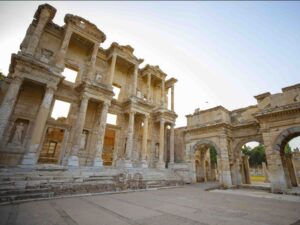Exploring the Ancient City of Ephesus
Ephesus Ancient City is one of the most remarkable archaeological sites in the world and a window into the grandeur of ancient civilizations. Located in the Aegean region of Turkey, this ancient city boasts a rich history that spans millennia, making it a must-visit destination for history enthusiasts, architecture lovers, and curious travelers alike. Ephesus was once a thriving metropolis known for its impressive structures, cultural significance, and vibrant trade routes. Today, it stands as a UNESCO World Heritage Site, inviting visitors to explore its ruins and uncover the stories woven into its stones.
A visit to Ephesus offers a unique opportunity to step back in time and experience the richness of ancient civilizations. With its stunning architecture, intriguing history, and spiritual significance, Ephesus is a destination that promises to leave an indelible mark on your heart and mind. Whether you are an avid history buff, a cultural explorer, or simply seeking a memorable travel experience, Ephesus has something to offer for everyone. Plan your journey today and embark on an unforgettable adventure through the wonders of ancient Turkey!
Ephesus Photos
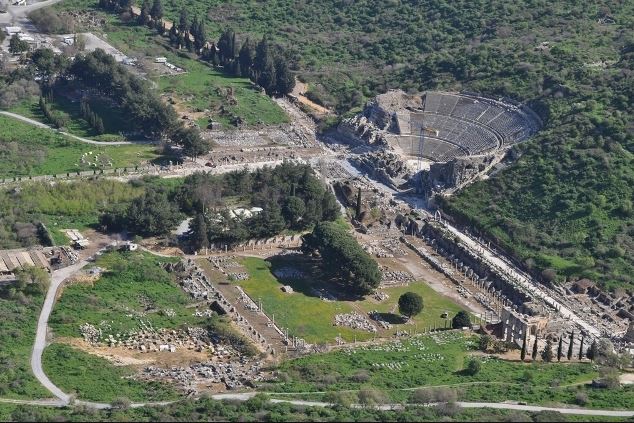
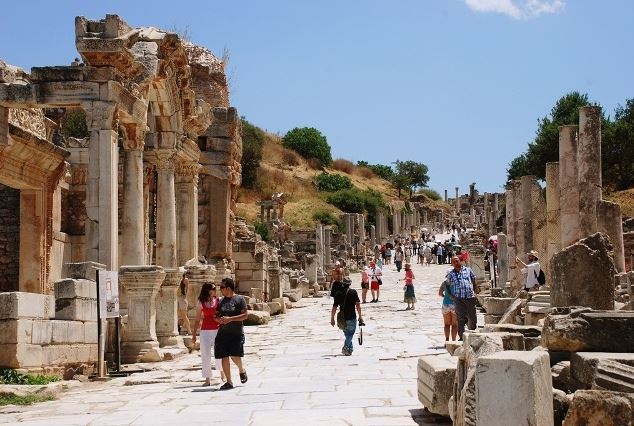
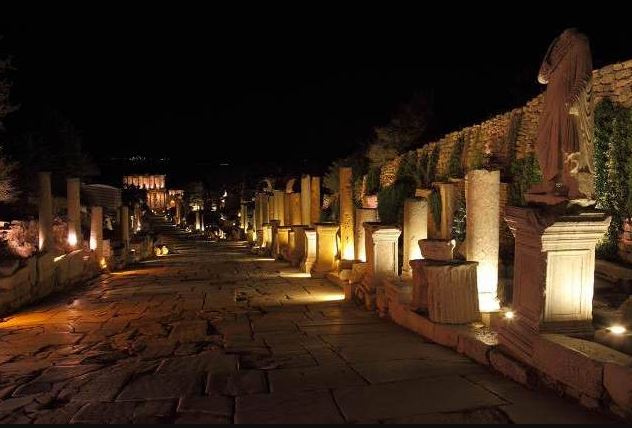
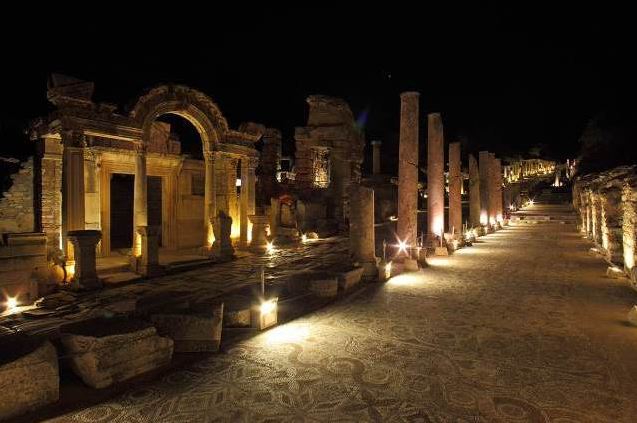
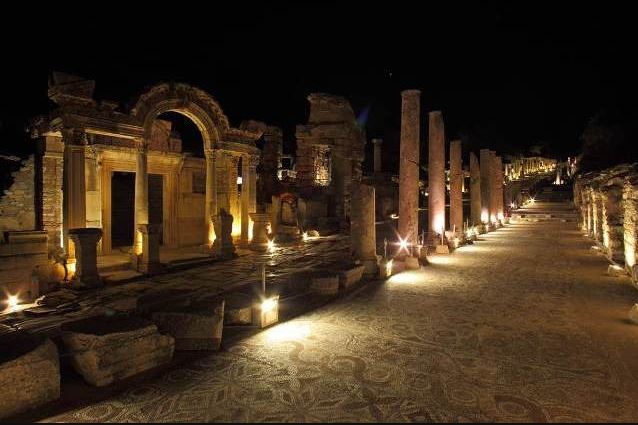
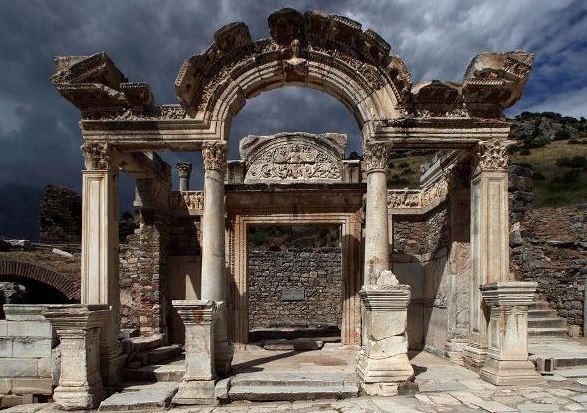
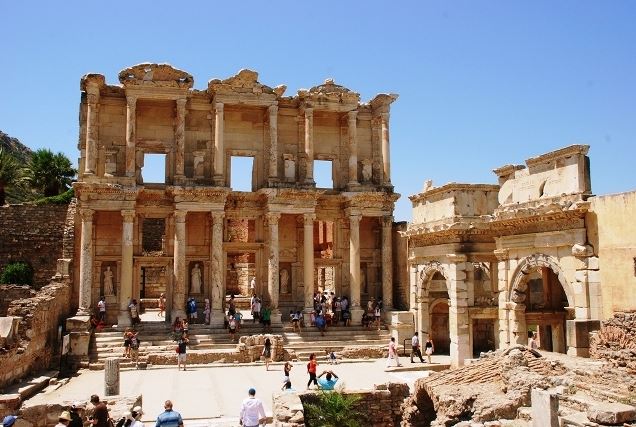
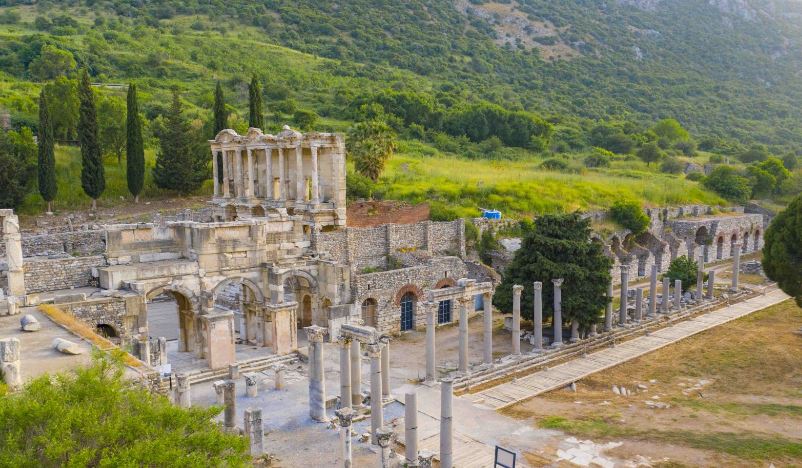
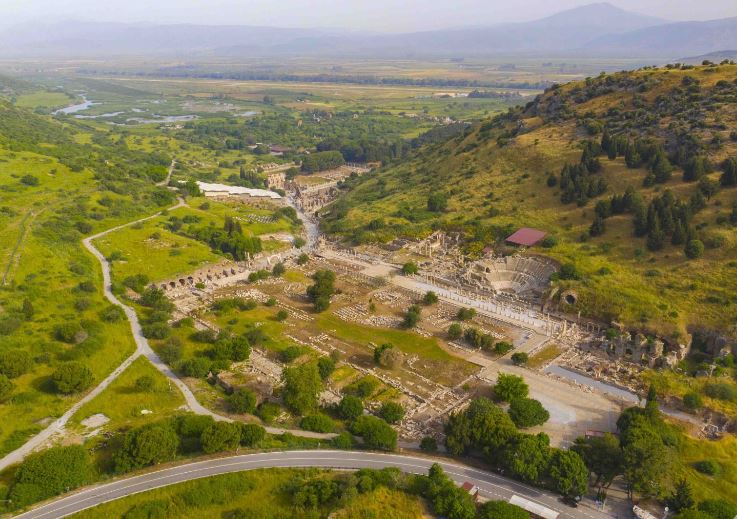
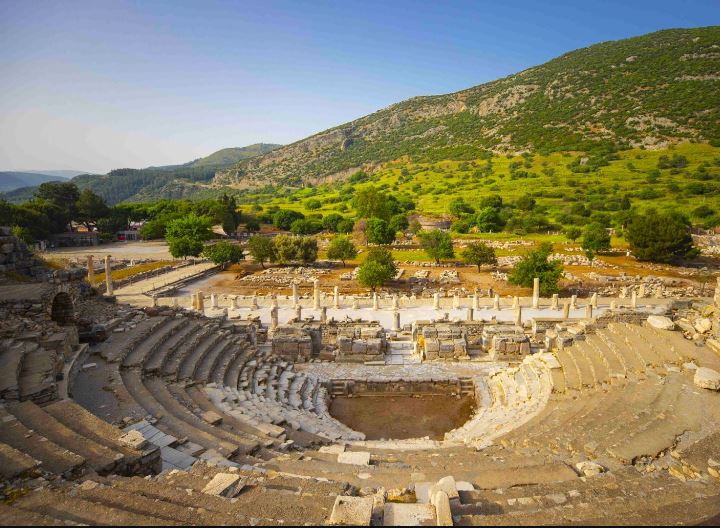
All the Photos from: https://kvmgm.ktb.gov.tr/TR-44404/efes-izmir.html
Table of Contents
Where is Ephesus
Ephesus is situated near the modern town of Selçuk, approximately 80 kilometers south of Izmir, Turkey’s third-largest city. The ancient city is easily accessible and offers a perfect day trip or extended stay for travelers exploring the Aegean region.
Getting There
- By Air: The nearest airport is Izmir Adnan Menderes Airport (ADB), located about 60 kilometers from Ephesus. From the airport, you can rent a car, take a taxi, or use shuttle services to reach Selçuk, which is the gateway to Ephesus.
- By Bus: Ephesus is well-connected by intercity bus services from major cities across Turkey, including Istanbul, Izmir, and Pamukkale. The bus station in Selçuk is conveniently located near the entrance to the archaeological site.
- By Train: You can take a train to Selçuk from Izmir, which is a scenic and relaxing journey. The train station is within walking distance of the Ephesus ruins.
- By Car: Renting a car is a great option if you want to explore the surrounding attractions at your own pace. The drive from Izmir to Selçuk is straightforward, with clear signage directing you to Ephesus.
Legends and Meaning of the Name
The name “Ephesus” is believed to have derived from the ancient Greek word “Ephesos,” though its exact origin remains a subject of debate among historians. According to one legend, the city was founded by a group of Amazons, fierce warrior women who established the settlement as a tribute to their goddess Artemis.
Ephesus is also steeped in mythology. One of the most famous legends is that of the Temple of Artemis, one of the Seven Wonders of the Ancient World. The temple was dedicated to the goddess Artemis, who was revered as the protector of women, fertility, and childbirth. The city flourished under her patronage, attracting pilgrims from far and wide.
Most Interesting Characteristics of the Site
Ephesus is replete with fascinating characteristics that make it a unique and captivating destination:
- The Library of Celsus: One of the most iconic structures in Ephesus, the Library of Celsus was built in honor of the Roman senator Tiberius Julius Celsus Polemaeanus. The façade is elaborately decorated with columns and statues, and it once housed thousands of scrolls, making it an important center of knowledge in the ancient world.
- The Great Theatre: With a capacity of up to 25,000 spectators, the Great Theatre of Ephesus is one of the largest and best-preserved ancient theaters in the world. Its impressive acoustics and stunning views of the surrounding landscape make it a remarkable site for performances and gatherings.
- The Temple of Artemis: Although only a few remnants remain, the Temple of Artemis was one of the largest temples of the ancient world and a significant place of worship. Its historical significance and the stories surrounding it draw visitors from around the globe.
- The Agora: The agora, or marketplace, was the commercial and social hub of Ephesus. It was a bustling center where merchants sold their goods, and citizens gathered for discussions and socializing.
- Basilica of St. John: Located nearby, this basilica was built over the believed burial site of St. John the Apostle. Its impressive architecture and serene atmosphere make it a worthwhile stop on your journey.
Why is it Worth a Visit?
Visiting Ephesus is a truly enriching experience for several reasons:
- Historical Significance: Ephesus was a major center of commerce, religion, and culture in the ancient world. The ruins tell the story of a city that played a vital role in the development of Western civilization.
- Architectural Marvels: The structures in Ephesus showcase the ingenuity and artistry of ancient architects and builders. Each building tells a story of its time, reflecting the values and beliefs of the people who inhabited the city.
- Cultural Heritage: Ephesus is a UNESCO World Heritage Site, recognized for its outstanding cultural value. By visiting, you are participating in the preservation of history and heritage.
- Spiritual Connection: The city is deeply connected to early Christianity and ancient religions. Exploring Ephesus allows visitors to reflect on the spiritual journeys that have taken place over the centuries.
- Natural Beauty: The surrounding landscape, with its rolling hills and olive groves, adds to the charm of Ephesus. The area is perfect for leisurely walks and enjoying the beauty of nature.
Best Time to Visit and Dress Code
Best Time to Visit
The best time to visit Ephesus is during the spring (April to June) and autumn (September to November) months. During these seasons, the weather is mild and pleasant, making it ideal for exploring the ruins without the scorching heat of summer. Summer can be extremely hot, with temperatures often exceeding 30°C (86°F), while winter can be rainy and cool.
Dress Code
While there is no strict dress code for visiting Ephesus, it’s advisable to dress modestly and comfortably. Here are some tips:
- Comfortable Clothing: Wear lightweight, breathable clothing suitable for walking and exploring. Since you may be out in the sun, consider light colors to reflect heat.
- Footwear: Sturdy walking shoes or sandals are essential, as the terrain can be uneven and rocky.
- Sun Protection: Bring a hat, sunglasses, and sunscreen to protect yourself from the sun, especially during the hotter months.
Entry Times and Fees
Entry Times
Ephesus is generally open to visitors throughout the week. The typical visiting hours are:
- Summer (April to October): 8:00 AM to 7:00 PM
- Winter (November to March): 8:00 AM to 5:00 PM
Entry Fees
As of the latest information, the entry fee for Ephesus is approximately 200 Turkish Lira (about $10), but prices may vary, so it’s advisable to check for updates before your visit. Children under a certain age may receive discounted or free entry.
Structure and Design
The layout of Ephesus is a testament to the architectural brilliance of the ancient world. Here’s a closer look at some of its most significant structures:
1. The Library of Celsus
The Library of Celsus is a stunning example of Roman architecture. The façade features a grand entrance flanked by columns, with niches that once held statues of famous philosophers and scholars. The interior was designed to house scrolls and manuscripts, making it a vital center for learning.
2. The Great Theatre
The Great Theatre is carved into the hillside and boasts remarkable acoustics. It features a semi-circular arrangement of seats and a stage that was used for dramatic performances, gladiatorial games, and public gatherings. The stunning views from the theatre add to its charm.
3. The Temple of Artemis
Although much of the temple has been lost to time, the site remains significant. It was constructed in the 6th century BC and was adorned with magnificent sculptures and artworks. The remaining columns and foundations serve as a reminder of its former glory.
4. The Agora
The agora served as the commercial center of Ephesus, with shops, stalls, and residences surrounding an open space. The layout of the agora highlights the importance of trade and social interaction in ancient Ephesus.
5. Basilica of St. John
This basilica features impressive architecture with large columns and an apse. It was built in the 6th century AD and holds significant importance for Christians, as it is believed to be the burial place of St. John.
History of the Site
Ephesus has a long and storied history that dates back to the 3rd millennium BC. The site has been inhabited for thousands of years, making it one of the oldest continuously inhabited cities in the world.
Early History
The earliest settlement at Ephesus is believed to have been established by the Hittites in the 3rd millennium BC. The city later came under the control of various civilizations, including the Greeks, Persians, and Romans. Each group left its mark on the city’s architecture and culture.
Hellenistic Period
During the Hellenistic period, Ephesus flourished as a major trade center and cultural hub. The city became known for its impressive structures, including the Temple of Artemis, which was considered one of the Seven Wonders of the Ancient World.
Roman Rule
Ephesus reached its peak during the Roman Empire, becoming one of the empire’s most important cities. The Romans invested heavily in the city’s infrastructure, building grand theaters, baths, and public spaces. The Library of Celsus, constructed in the 2nd century AD, is a testament to the city’s intellectual pursuits during this time.
Early Christianity
Ephesus played a significant role in the early Christian community. The apostle Paul spent time in Ephesus, establishing a church and spreading the teachings of Christianity. The city was also home to the Council of Ephesus in 431 AD, which addressed important theological issues.
Decline and Abandonment
With the decline of the Roman Empire and the rise of the Byzantine Empire, Ephesus faced challenges due to shifting trade routes and invasions. By the 15th century, the city was largely abandoned, and the ruins were left to the elements.
Modern Excavations
Archaeological excavations began in the 19th century and continue to this day. The ruins of Ephesus have been carefully preserved and restored, allowing visitors to experience the grandeur of this ancient city.
Nearby Attractions
Ephesus is surrounded by several other attractions that enhance your visit to the region:
1. The House of the Virgin Mary
Located on Mount Koressos, the House of the Virgin Mary is believed to be the final resting place of Mary, mother of Jesus. The site is a place of pilgrimage for many and features a small chapel and beautiful gardens.
2. Pamukkale
Famous for its stunning white travertine terraces and thermal springs, Pamukkale is a UNESCO World Heritage Site located about 18 kilometers from Ephesus. The unique formations and mineral-rich waters create a breathtaking landscape.
3. Selçuk Castle
This historic castle, perched on a hill overlooking Selçuk, offers panoramic views of the surrounding area. The castle dates back to the Byzantine period and provides a glimpse into the region’s history.
4. St. John’s Basilica
As mentioned earlier, the Basilica of St. John is located near Ephesus and is built on the site believed to be the burial place of St. John the Apostle. The impressive ruins and serene atmosphere make it a peaceful place to explore.
5. Sirince Village
This charming village known for its traditional architecture and local wines is located about 8 kilometers from Ephesus. Visitors can stroll through cobblestone streets, sample local delicacies, and purchase handmade crafts.
Interesting Facts About the Site
- Cultural Melting Pot: Ephesus was home to a diverse population, including Greeks, Romans, and later Christians, creating a rich tapestry of cultural influences.
- Largest Library: The Library of Celsus was one of the largest libraries in the ancient world, housing approximately 12,000 scrolls and serving as a center of learning.
- Architectural Innovation: The Great Theatre of Ephesus is considered one of the best-preserved ancient theatres and showcases the architectural ingenuity of the Roman era.
- Religious Significance: Ephesus is mentioned in the Bible, particularly in the Book of Revelation, where it is referred to as one of the seven churches of Asia.
- UNESCO World Heritage Site: Ephesus was inscribed as a UNESCO World Heritage Site in 2015, recognizing its outstanding universal value and cultural significance.
Tips for Visitors
- Plan Ahead: To make the most of your visit, plan your itinerary in advance. Allocate sufficient time to explore the various sites within Ephesus and consider guided tours for deeper insights.
- Stay Hydrated: Ephesus can get hot, especially during the summer months. Bring plenty of water and stay hydrated while exploring the ruins.
- Wear Comfortable Shoes: The ancient streets are uneven and can be challenging to navigate. Comfortable walking shoes are essential for a pleasant experience.
- Respect the Site: Ephesus is a historical and archaeological site. Be respectful of the ruins and avoid climbing on structures or disturbing the environment.
- Consider Timing: Visit early in the morning or later in the afternoon to avoid crowds and enjoy a more intimate experience with the ancient ruins.
Is the Museum Pass Valid?
As of now, the Museum Pass (Müze Kart) is valid for entry to Ephesus. The pass allows unlimited access to many museums and archaeological sites across Turkey, making it a worthwhile investment for travelers looking to explore multiple locations.
Frequently Asked Questions
1. What is the best time to visit Ephesus?
The best time to visit is during the spring (April to June) and autumn (September to November) when the weather is mild and pleasant for exploring.
2. How do I get to Ephesus from Izmir?
You can take a bus or train to Selçuk and then reach Ephesus by walking or taking a short taxi ride from the town center.
3. Is there an entry fee for Ephesus?
Yes, the entry fee is approximately 200 Turkish Lira (about $10), but prices may vary, so check for updates before your visit.
4. Can I take photos inside Ephesus?
Yes, photography is generally allowed in Ephesus, but be respectful of other visitors and the historical significance of the site.
5. What should I wear when visiting Ephesus?
Dress comfortably for walking and exploring. Lightweight, breathable clothing and sturdy walking shoes are recommended, along with sun protection.

